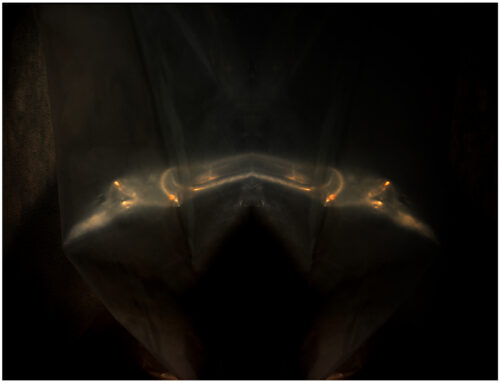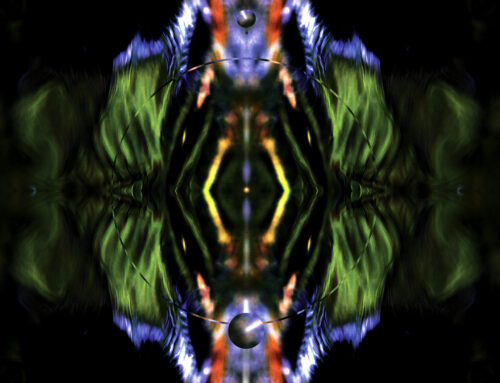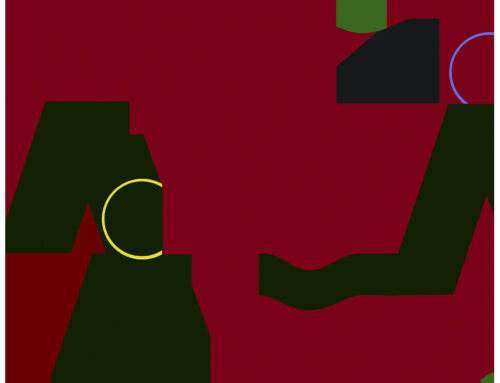There are two elephants left in the camp. As always, at day’s end, the mahouts lead them up into the low hills, tethering the giant creatures on long chains so they can forage for most of the evening, but not stray too far. Elephants only sleep a few hours each evening, eating almost constantly, always abundantly curious about what lies over the next hill.
I’d had dinner and retired early in my small bungalow on the edge of the camp, only a few feet from the path the elephants take on their way up each evening and back again in early morning. As is my custom in these days of beloved senescence, I retired early, reading myself to sleep. In the early hours of the morning, however, I bolted upright as if prodded by some presence moving out in the still rich darkness. I rubbed my eyes, read a bit more, then tried to reclaim my dreaming state. Impossible. I was too restless. I rose, dressed, and went out to the porch and stared up into the hills, thinking about the elephants. Were they sleeping? Were they dreaming about a different life they might have lived, as we so often do, or where they settled into their present reality, shackled and roaming about on thirty-meter chains, twisting and pulling bunches of grass from the earth, stoking their voracious appetites?
Suddenly I felt an urge to walk up the trail; I’d hiked up before with the mahouts in previous years, always moving just in front of Panom as she plodded up the path, slow and surefooted. It wasn’t a lengthy hike—less than a kilometer up. Why not go, I thought. I dressed, slipped on my shoes, grabbed a small pack, and headed up the mountain. It was dark, but there was enough light to get a sense of the turns in the trail. After thirty minutes or so, the narrow footpath opened to a grassy meadow in which car-sized boulders lay scattered here and there with a few scraggly teak trees growing between them. The sun was at least an hour from rising; a pale moon floated between a few scattered clouds, casting an ethereal spell across the valley.
I looked for the two elephants; I didn’t see them. All I could discern in this pale light were those dark stones rising from the ground. Then, to my left and about twenty yards away, I saw one of the elephants move. And to the right of her, the smaller elephant began ambling up from a prone position, perhaps having heard my arrival. I dared not get too close without their mahouts being present, so I sat on a large, flat stone at a safe distance trying to observe without alarming them. Of course, with their remarkable sense of smell and hearing, they knew I was on my way the minute I left the bungalow.
Beyond the two grazing elephants in the grassy meadow, the valley spread out toward Mae Hong Son. Far off, I could hear the crowing of roosters and temple bells from Wat Phra That Mae Yen rousing the monks and farmers. Suddenly I heard a soft crunching of sand and stone behind me; perhaps one of the mahouts had arrived early. I turned to look; no one was there. Then I saw, between me and the breathing night, a slight movement as if one of the boulders had wakened from a deep sleep. It seemed to be moving toward me, imperceptibly slow and dreamlike. Finally, silhouetted against the blue-black starlit sky, a third elephant turned its head. I could hear the sound of its ears quietly slapping against its shoulders, a few exhalations from its undulating trunk.
“Why have you come?” I heard a voice from somewhere. Or did I?
I quickly looked left and right then behind me, waiting for the human to appear from beyond the boulders. No one.
“Where have you been?” asked the voice that wasn’t really a voice. Or was it?
“Who are you?” I asked, expecting a human to stroll into view.
“You know me,” answered a whisper like a gentle wind floating up from the valley.
“Panom?” I asked. “Is that you?” Then I immediately slapped my arms and laughed. “OK. I’ve got it. This is a dream. That’s all.”
“Maybe. Maybe not,” said the elephant. “Does it matter?”
“No, I guess not. No.”
“So why are you here?” she asked again.
The elephant remained indiscernible in the darkness, but I looked up toward and into where I imagined her inquisitive eyes must be. Because I might or might not be dreaming, or that Panom might or might not be real—that none of this is—I thought about my reasons for being there, wondering perhaps if I mostly wanted to share my concern for her family of elephants, and, I suppose, by extension, all living things, especially humans; not, mind you, because we’re the apex of importance. We aren’t at all. What we seem to be is the catalyst for so much distress about almost everything. But I didn’t.
“I wanted to say goodbye,” was the only answer I could offer.
Panom came a little closer. With her trunk, she blew an ant-sized cyclone of dust across my feet. “Why say goodbye to someone who hasn’t gone anywhere?”
“What do you mean?” I asked, “I was told you’d had a terrible fall, that you had died.”
The great elephant’s head tilted to the left, then to the right; nothing came but silence. She didn’t answer my question. Or did she?
Panom slowly turned and walked back across the meadow, disappearing over the horizon.


![]()










Leave A Comment
You must be logged in to post a comment.